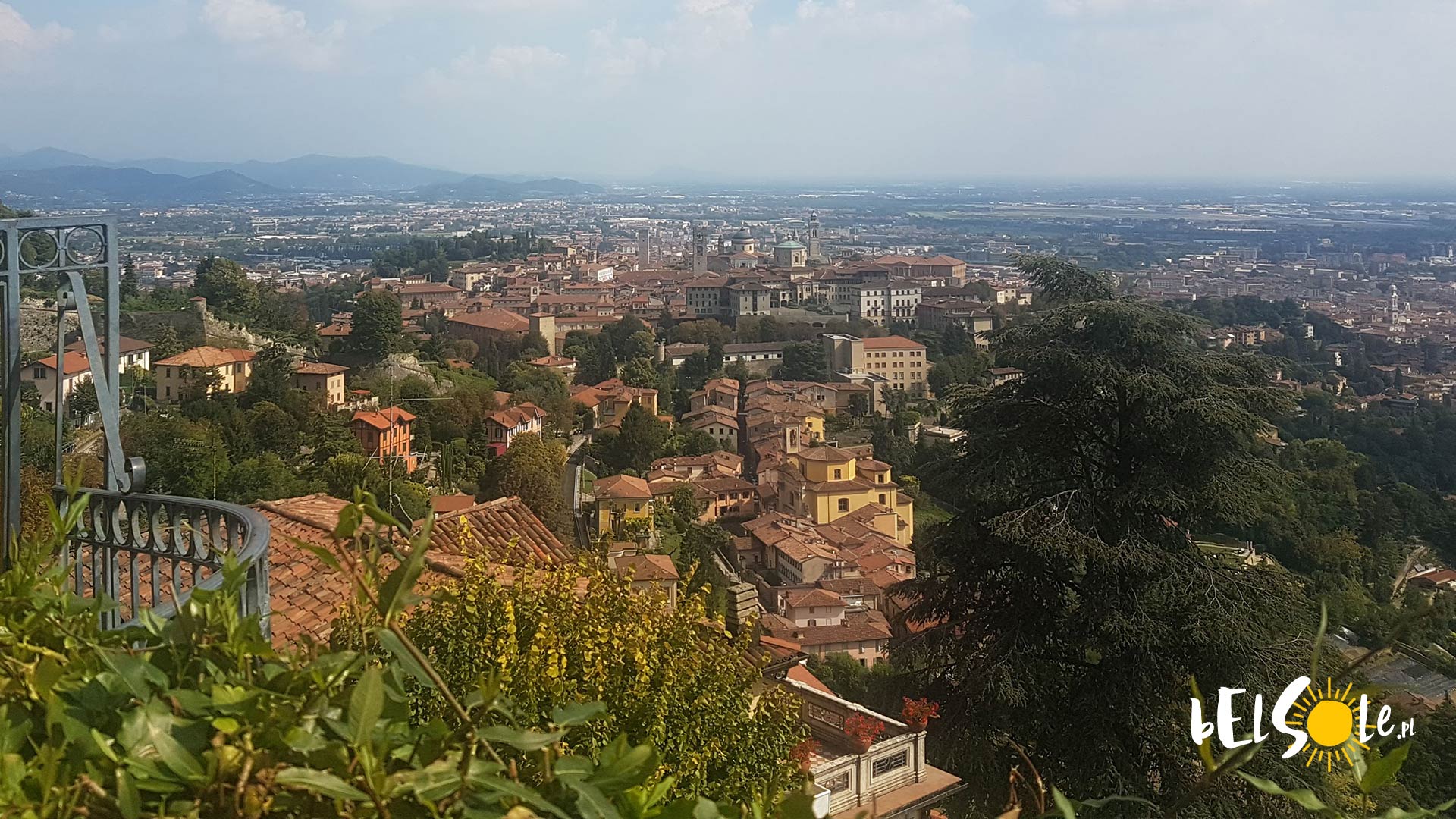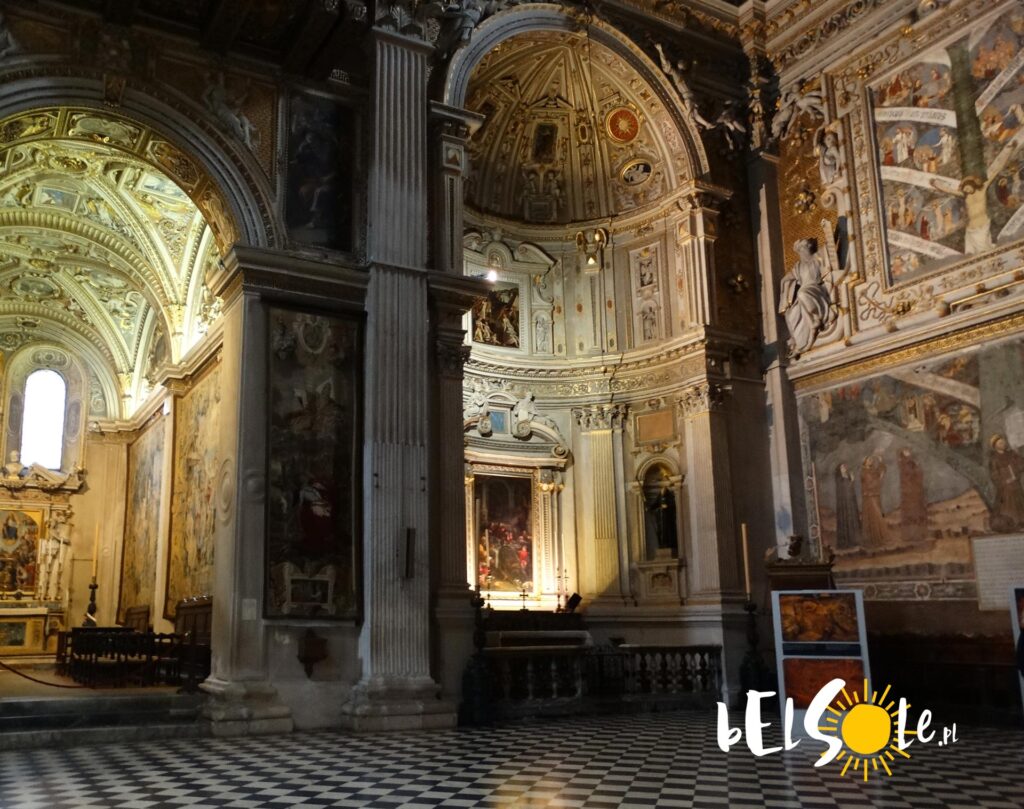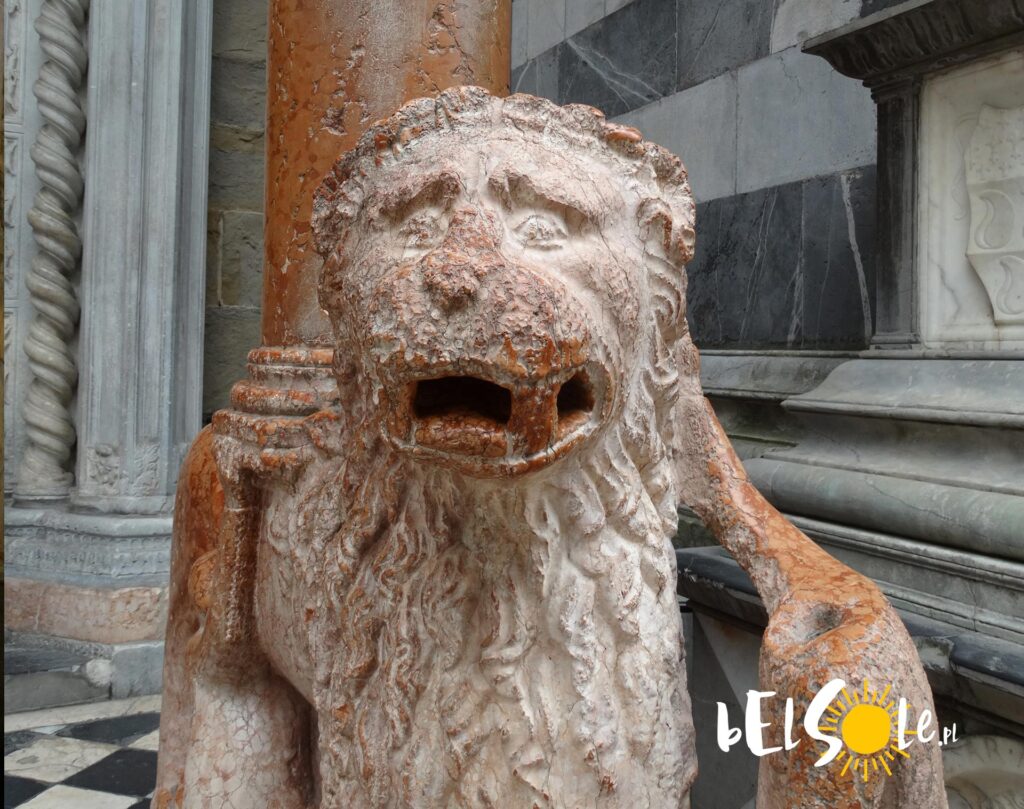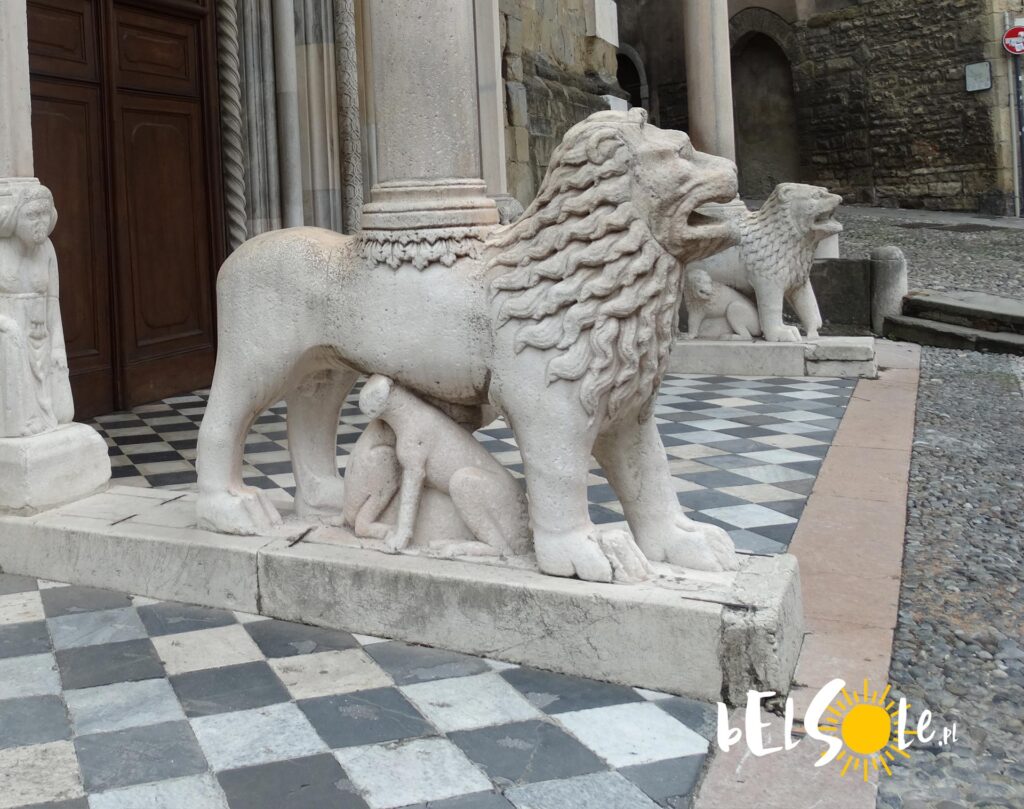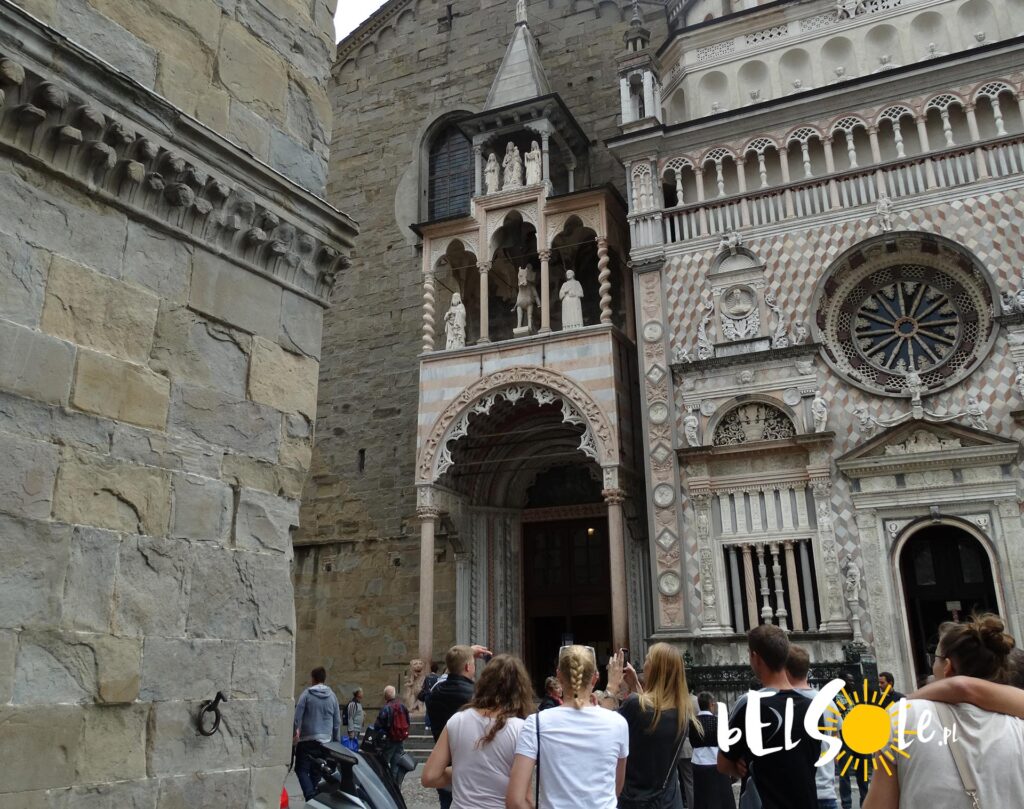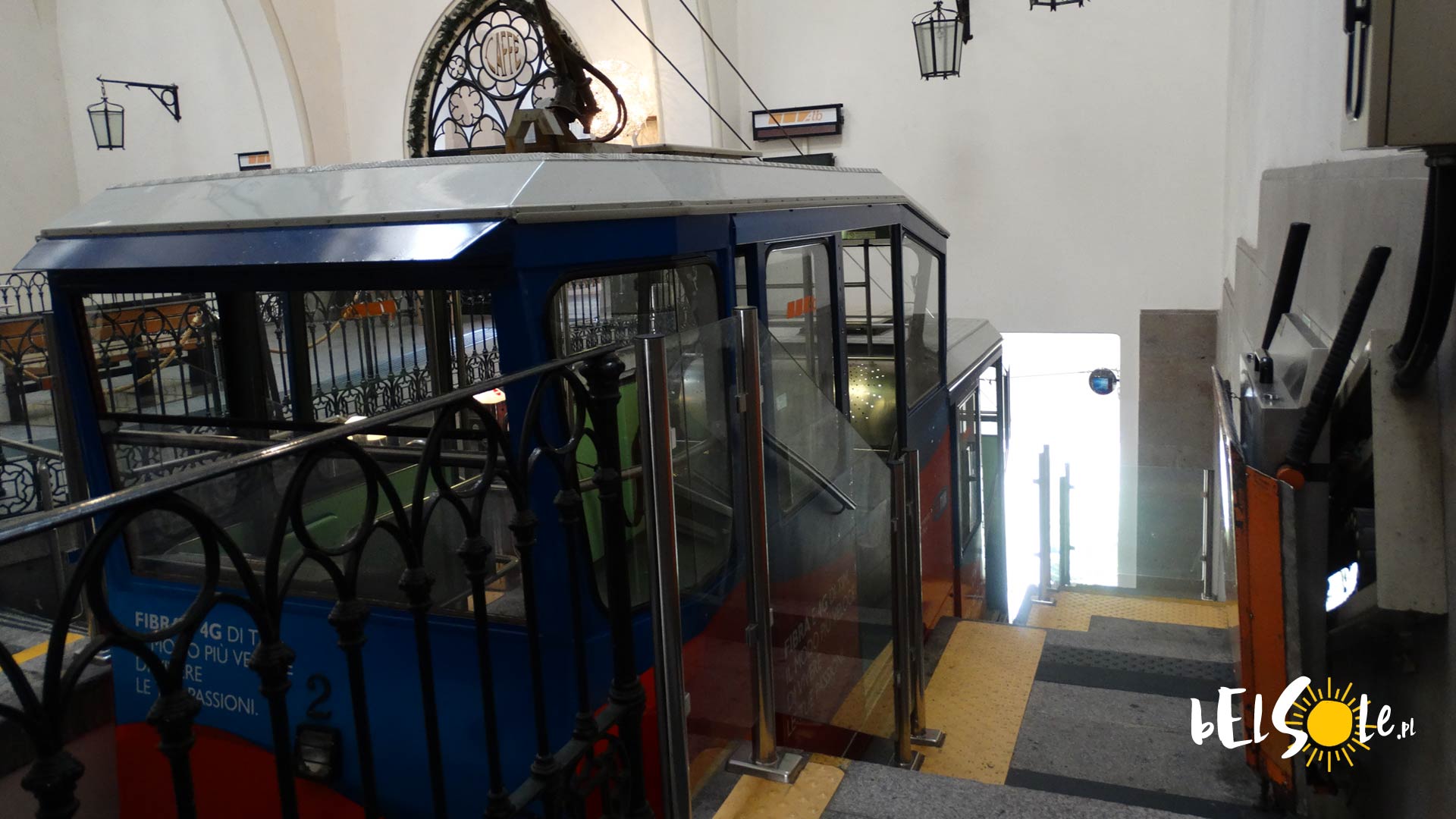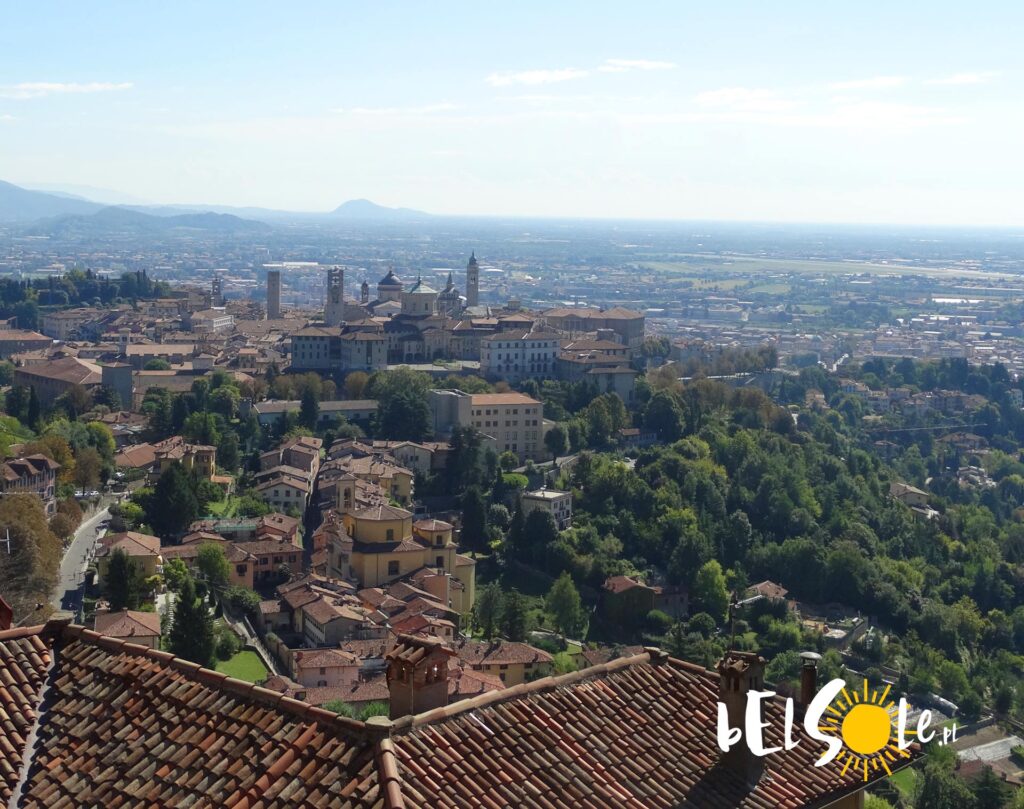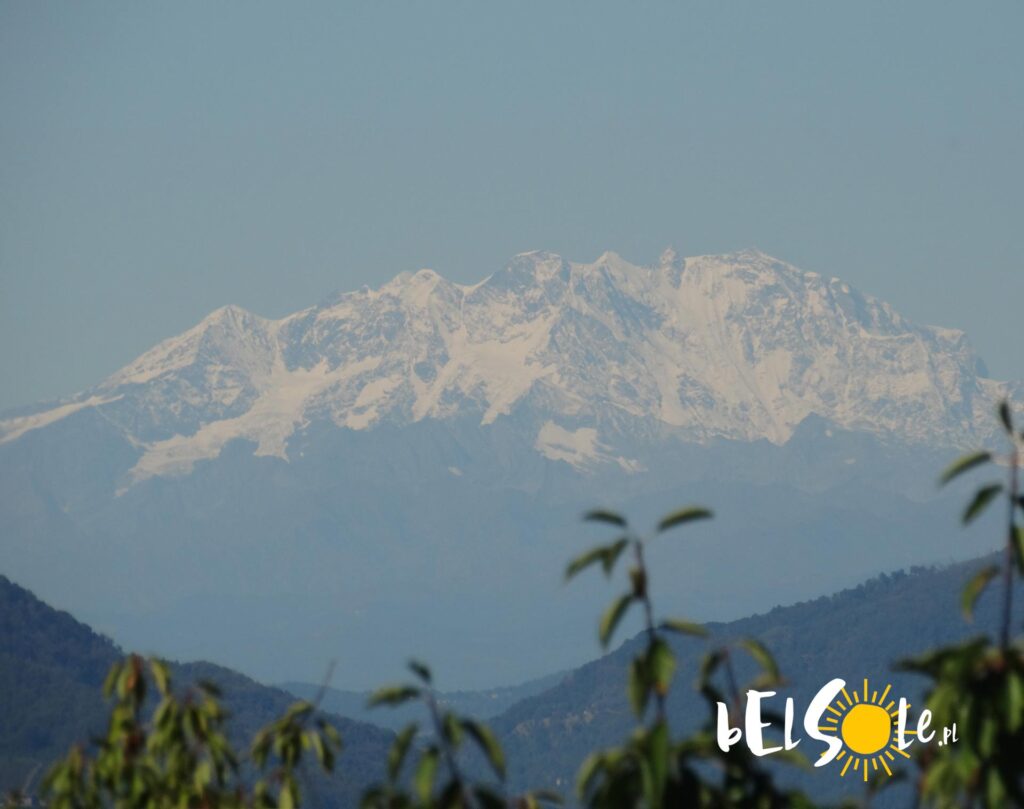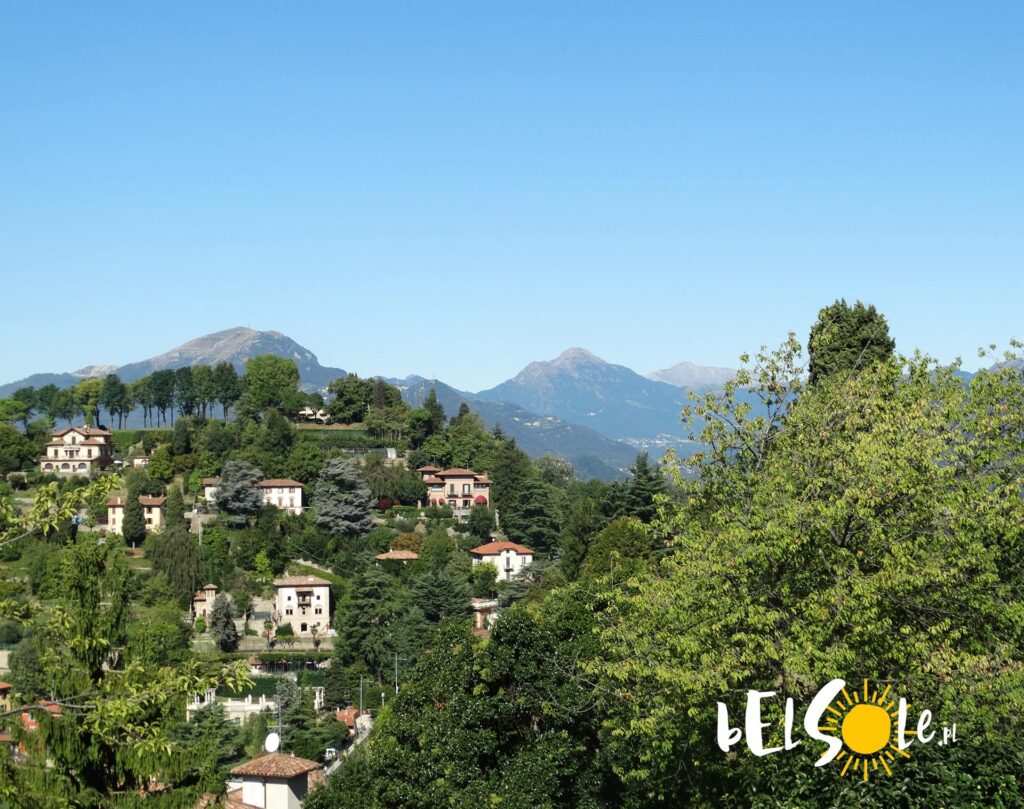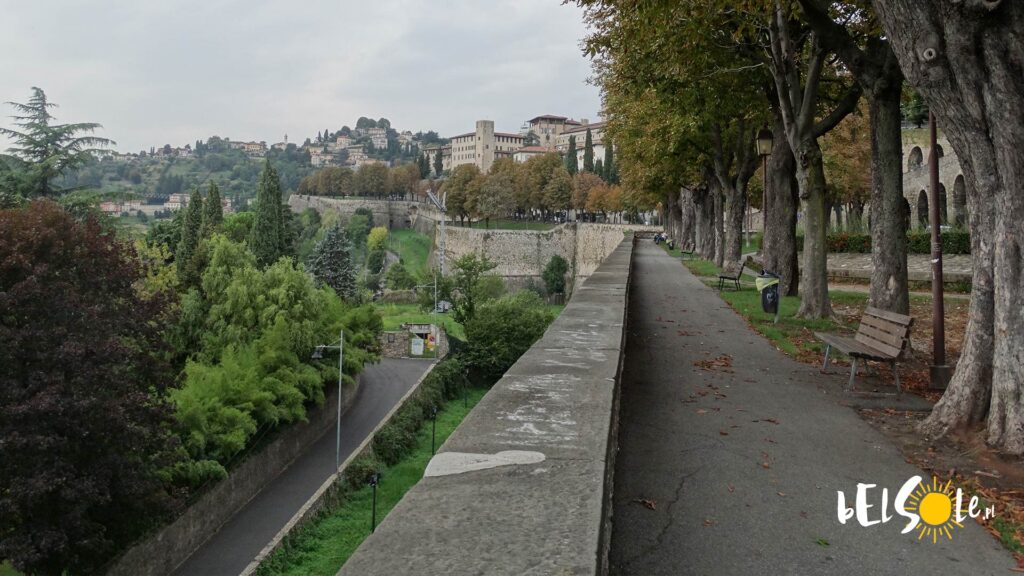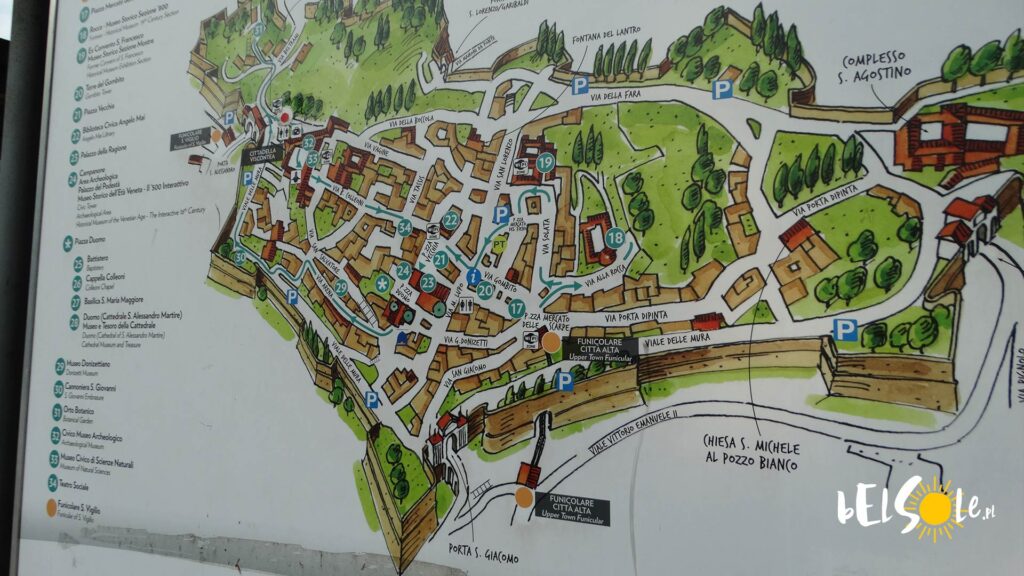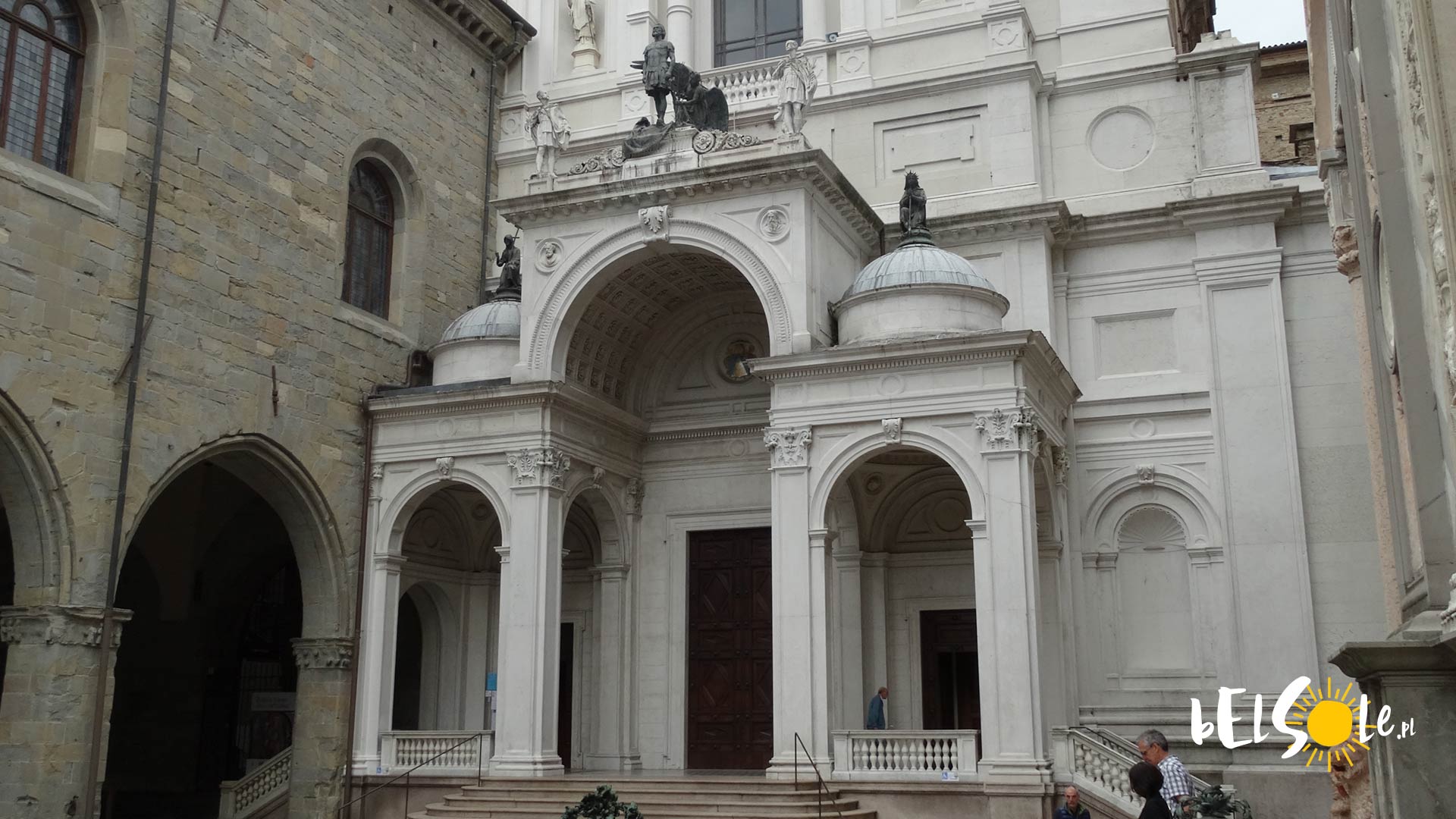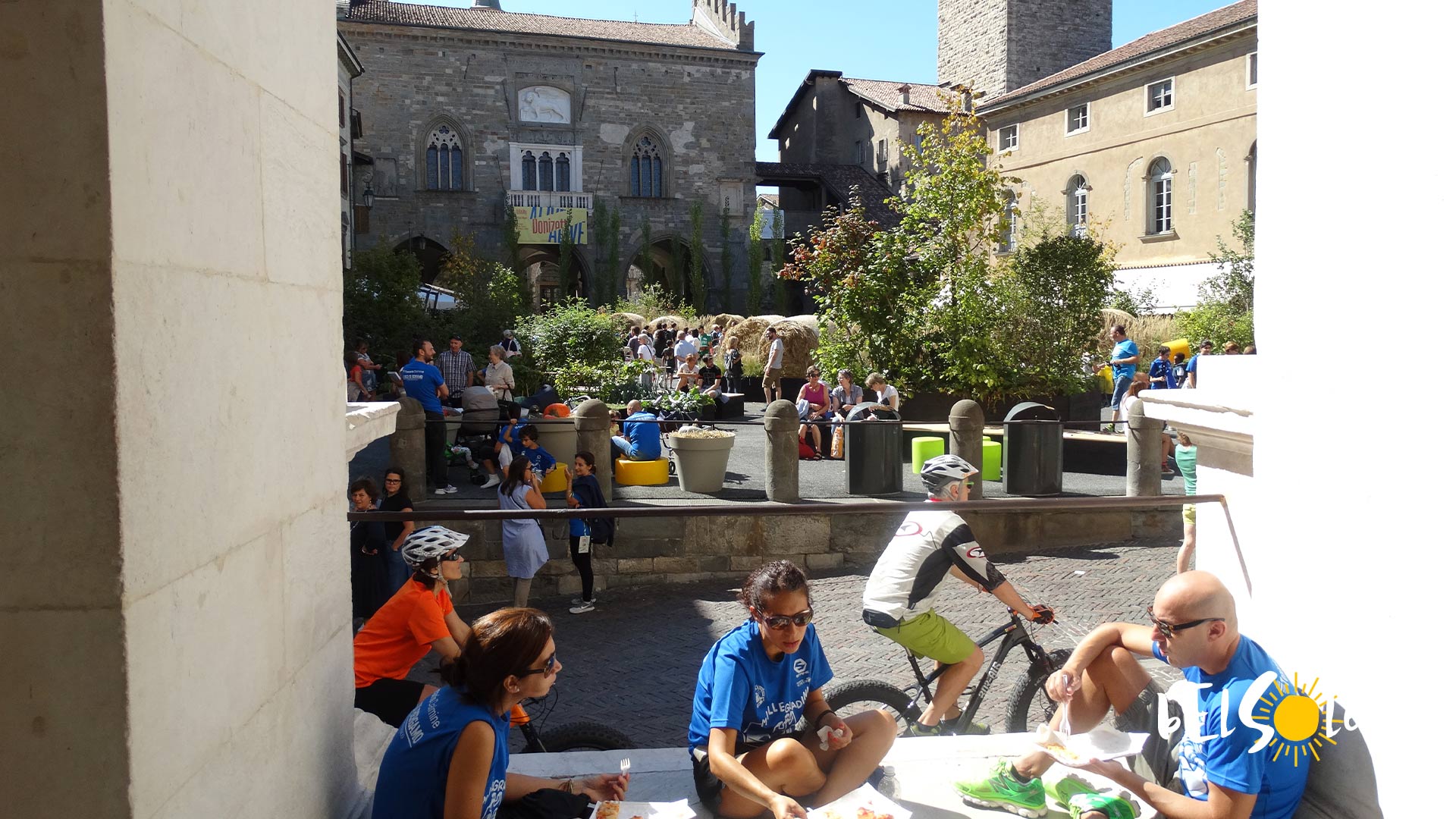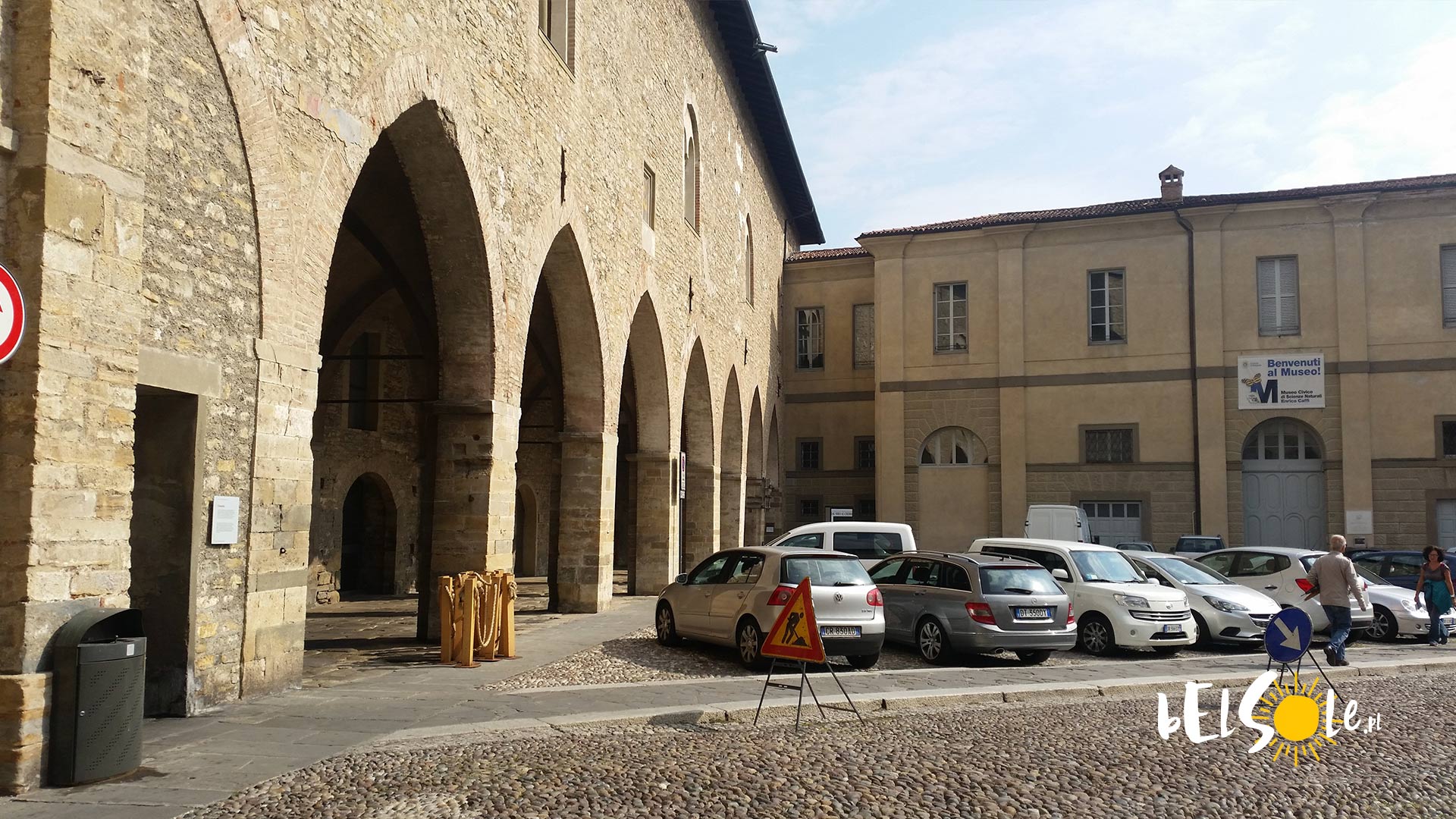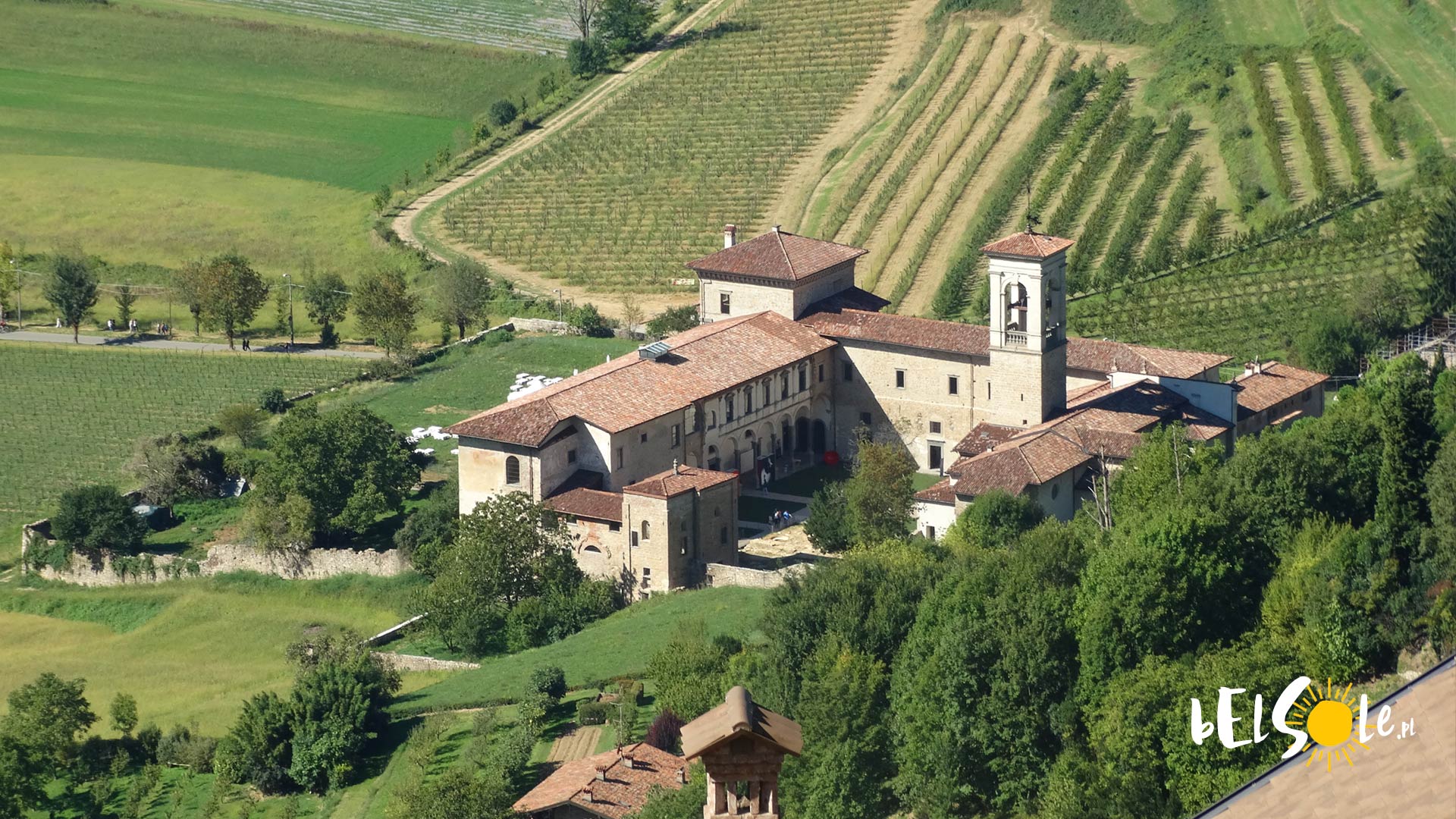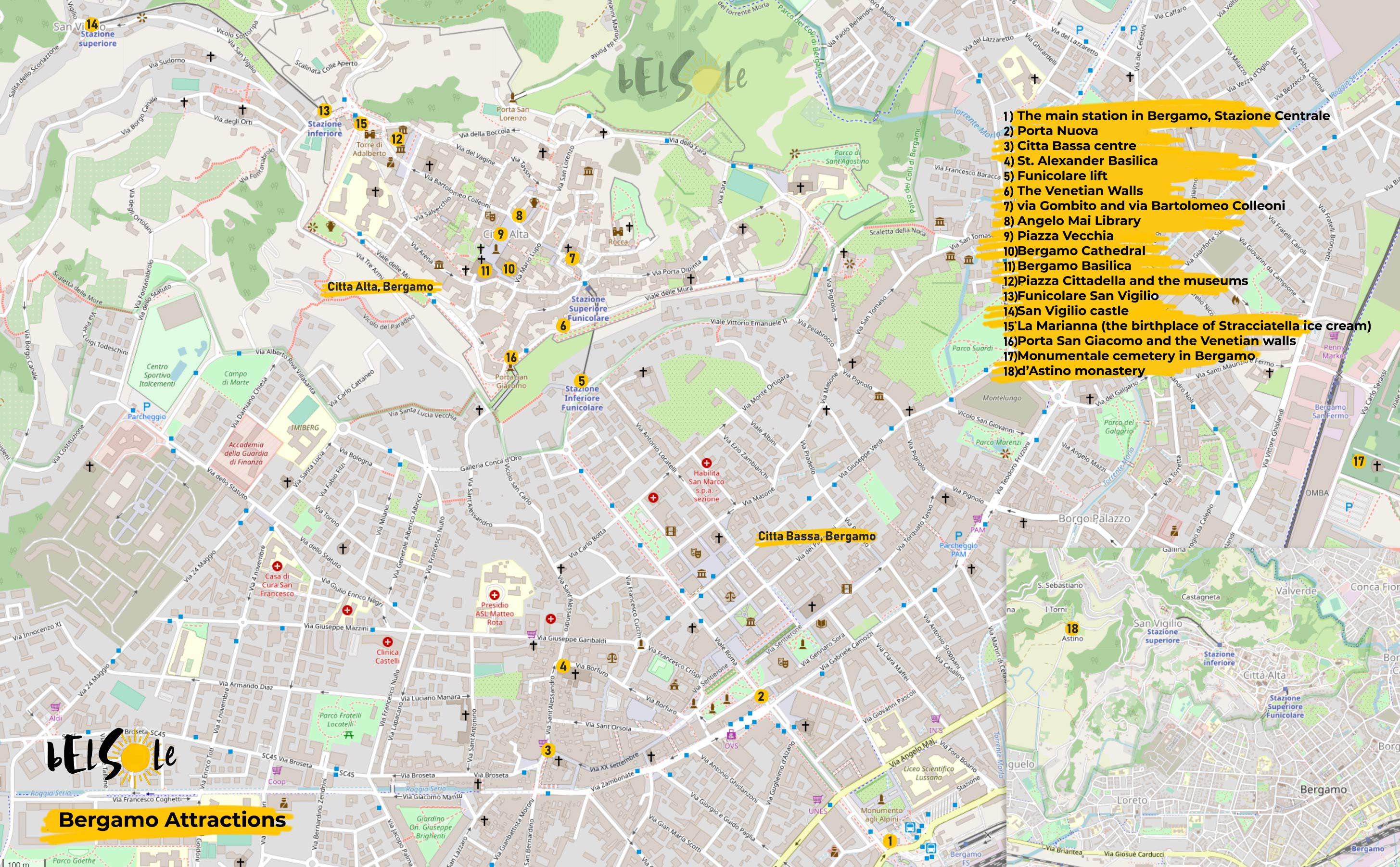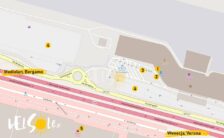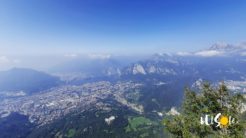Bergamo is an Italian pearl, right next to Milan, which is often omitted by tourists, who head straight to the capital of Lombardy. What is worth seeing in Bergamo? What attractions and monuments to see in Bergamo? Here’s our little guide, showcasing 13 interesting places that we think are worth your time.
Bergamo is separated into two main parts: the lower town – Citta Bassa and the upper town – Citta Alta. Both have plenty of monuments, churches and squares for us to visit. We can get to the upper part of the city by foot, bus or with the help of a special Funicolare lift (starts from Via Vittorio Emanuele II), one of the Bergamo attractions.
Santa Maria Maggiore Bergamo Basilica
It’s a Romanesque church, located right next to the Bergamo cathedral, although it’s the Basilica that attracts the eye first, with its characteristic entrance. When entering through the Red Lions portal, the interior welcomes us with gold and baroque architecture. The church reeks of splendor, the walls are decorated with Florencian tapestry. The basilica got finished in 1137, thanks to the bishop of Bergamo, Gregoire, and the citizens of Bergamo who were thankful for the city’s survival through the drought. The inside of the basilica was done by Giovanni Angelo Sala and his son, Gerolamo.
What to pay attention to?
- The Red Lions Portal (from the Piazza Duomo side), by Giovanni da Campione
- The White Lion Portal
- The tapestry from Florence and Antwerp
Santa Maria Maggiore Bergamo Basilica – opening hours
The church’s open to visitors from 9:00 to 12:00 and 14:30 to 18:00, Monday to Wednesday and from 9:00 to 6:00 from Thursday to Sunday. The Basilica organises masses on 10:00 from Monday to Friday and 11:00 till 12:15 on Sunday.
Funicolare Bergamo, a cableway to Citta Alta
Our main form of transportation between the lower Citta Bassa to the upper Citta Alta. What’s the ticket price? The usual city ticket will be sufficient to enter the lift. When it comes to 24h and 72h tickets, those we need to verify before entering. During the high season, we have to be pretty patient, as the wagon can only carry 50 people at a time, and rides occur every 10-15 minutes. When it comes to the views, if you want to see the landscapes and such, we recommend sitting in the back (at the bottom), and if you’d rather watch the climb, go to the front.
What to pay attention to?
- Venetian walls
- The view of Citta Bassa (from the cable car)
Funicolare S.Vigilio cableway (leading to Castello San Vigilio)
Not a very well known gem in the tourist world. At the end of Citta Alta, by the Largo di Porta S.Alessandro street, we can find another, well hidden this time, lift. This one’s much longer than the one from Citta Bassa, and the cable car is even smaller. After getting to the top, we can get to Castello di San Vigilio. We’ll be rewarded for that small climb with the incredible view of the Bergamo panorama, the Alps, and with a bit of luck you can even spot Milan. Castello San Vigilio was built in the 6th century, and the place was occupied by a Roman watchtower. Thanks to it being 496 m above the sea level, it guarantees a good view of the Prealps and all the nearby lands. The castle closes right before the sunset (or around 17:00 outside the season). The entry is free.
What to pay attention to?
- The beautiful Bergamo panorama, great place for photographers
- The Castello San Vigilio ruins
- View of the Prealps
The Venetian Walls of Bergamo
This characteristic view is visible from the majority of Citta Bassa. The walls tower over the rest of Bergamo, reminding us about the strategic importance this place once had for Lombardy. The walls entered the works in the 16th century, as ordered by the Venetian Republic, to strengthen their presence in Lombardy. The build was looked after by Count Sforza Pallavicino. The entire build was supposed to cost 40 000 ducats, but the finished product, in 1588, turned out to have costed 1 000 000 ducats. Nowadays, the walls are 6200 m long, in some places over 50 m tall and the entire line is protected by 14 bastions.
What to pay attention to?
- The entry gates to the city: St. Augustine’s, St. Jacob’s, St. Alexander’s, St. Lawrence’s (nowadays Giuseppe Garibaldi’s) gates
- The bridge by the St. Jacob’s gate
- There’s an option to take part in a tour, which goes through the passages and tunnels of the Venetian Walls, with the Le Nottole group
Bergamo Cathedral
What are the opening hours and the ticket prices of the Bergamo Cathedral?
This baroque cathedral stands in the place of an old church (St. Vincent’s). It was designed by Antonio di Pietro Averlino in the 15th century, as per Giovanni Barozzi’s orders. The church is dedicated to St. Alexander, just like the rest of Bergamo. The church has one nave in the form of a cross. In the side altars, we can find paintings and sculptures from even as far back as the 16th century, made by Andrea Previtali, Giovanni Battista Moroni or Giovanni Battista Tiepolo. The main altar was designed by Filippo Juvarra. The cathedral’s open from Monday to Friday, from 7:30 to 12:30, and then after siesta from 15:00 to 18:30. On Saturdays and Sundays, it’s open from 7:00 to 19:00 with no breaks. You can enter it for free. Among all the precious objects you’ll find inside, one is especially worth taking a glance at Pope John XXIII’s Papal Tiara.
Angelo Mai Library in Bergamo
What to see in Bergamo? Certainly this place. This huge, eye-catching building, located right next to Piazza Vecchia is the most important library in Bergamo. We can find plenty of ancient collections of documents, be they historical or concerning the Bergamo city itself. Civica Biblioteca Angelo Mai di Bergamo in Palazzo Nuovo shines with its white facade and the colonnade. The library was built on the 13th of february, 1768, when cardinal Giuseppe Alessandro Furietti gave away his collection of 1363 tomes as a gift to the city. Nowadays, the library has become home to 700 000 books, 2150 incunables, over 10 000 magazines and some sizable collections of manuscripts. It’s one of the biggest and most important collections in all of Italy. Palazzo Nuovo is also a meeting place for Italians, which often eat meals there, while admiring the Vecchia square.
Piazza Vecchia in Bergamo
What’s on the Piazza Vecchia? What to see in Bergamo? The main square of Citta Alta merges many attractions into one place. On the northern wall, you’ll find the Angelo Mai library, the northwestern wall hides the Palazzo del Podesta and Campone (city tower), alongside the Museo Delle Storie di Bergamo. The southwestern side has Palazzo della Ragione, through which we can get to Piazza Duomo (Piazza Padre Reginaldo Giuliani) and to the Cathedral (and the Basilica). In the middle of the square, there’s the Contarini Fountain from 1780. For a short time, it was replaced with a statue of Garibaldi, but in the 20th century it came back in its original form. It’s a common place for Italians to meet up and a big spot for local events.
Via Gombito and Via Bartolomeo Colleoni
The main street of Citta Alta, which goes from Funicolare, through Piazza Vecchia, all the way up to Piazza della Cittadella. We can find many restaurants, shops and services there. In the weekends, the street is very heavily crowded, so in case you’re not a fan of having to squeeze through swarms, we recommend using the equally beautiful streets of via Bartolomeo Colleoni. In the first half of the way, we’ll be able to admire Piazza Mercato delle Scarpe, which is located right next to the Funicolare station. Next will be the Torre del Gombito. Between via Gombito and via Bartolomeo Colleoni, there is Piazza Vecchia, alongside the access to the Bergamo Cathedral, Basilica and the city tower. Next to that, there’s the Angelo Mai library, and while heading upwards, we can find Teatro Sociale and the Giardino di Casa Tresoldi gardens. The street ends on the Cittadella square, which has gained its fame thanks to its museums.
Piazza della Cittadella and Bergamo museums
Piazza della Cittadella is a square that connects two very popular museums. Which museums to see in Bergamo?
Museo Civico di Scienze Naturali di Bergamo
The Civic Museum of Natural Science in Bergamo has over 55 000 exhibits/specimens, with the main portion of its collection being ‘Paleontology of Bergamo’, which collects fossils from the Bergamo province. Most of the exhibits are stored in collections mainly for scientific reasons, some of them make up the naturalistic archive. The second collection, ‘Paleontology from outside Bergamo’ consists of objects from outside Italy.
Museo Civico di Scienze Naturali di Bergamo is open: from April to September, from 9:00 – 13:00 and 14:30 – 18:00, on Saturdays and Sundays from 10:00 – 18:00. During the remaining months, the place closes half an hour earlier. The museum’s closed on Mondays, and the tickets cost 3 EUR.
Cimitero Monumentale Di Bergamo
First mentions of the Bergamo cemetery date back to 1892, when an architect, Ernesto Pirovano won a contest, which led to the start of the build. In 1905 the build was halted, 5 years later it was resumed and finally finished in 1913. The bas relief decorating the mausoleum showcases Miserere (Psalm 51) and it was made by Ernesto Bazzaro. The remaining decorations are from Emilio Buzzetti. Enrico Colombo also had a hand in the project, he mostly focused on the iron gate.
Cimitero Monumentale Di Bergamo is located on the outskirts (Piazzale del Cimitero 21). It’s the northeastern side of the city, and although it is quite far away from the centre, it is surprisingly simple to get to thanks to public transport. You can get there by tram, which leaves from the tram stop near the main station in Bergamo. The stop you want to leave on is the BG S. Fermo (you can find the details at: http://www.teb.bergamo.it/it/il-mio-viaggio/fermate-e-orari ).
Monastero d’Astino
The d’Astino monastery is located by the d’Astino hill, near the centre of Bergamo. The nearby fields and hills add a countryside feel to this place, which is only a few kilometers away from Citta Alta. In the past, it was a Vallombrosian monastery, built in 1107. Nowadays, that role has been abandoned, as it now serves as a tourist attraction, overhauled to such a rule in 2015. There, we can find a small Italian restaurant and a Church of the Holy Sepulchre, with elements of the choir, vault and altar from the 16th century. Monastero d’Astino is open from 10:00-12:00; 14:00-17:00 and the entry is free.
Map of attractions in Bergamo
- The main station in Bergamo, Stazione Centrale
- Porta Nuova
- Citta Bassa centre
- St. Alexander Basilica
- Funicolare lift
- The Venetian Walls
- via Gombito and via Bartolomeo Colleoni
- Angelo Mai Library
- Piazza Vecchia
- Bergamo Cathedral
- Bergamo Basilica
- Piazza Cittadella and the museums
- Funicolare San Vigilio
- San Vigilio castle
- La Marianna (the birthplace of Stracciatella ice cream)
- Porta San Giacomo and the Venetian walls
- Monumentale cemetery in Bergamo
- d’Astino monastery


